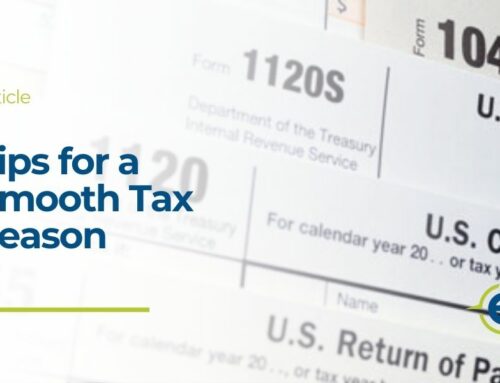Put Your Insurance Dollars To Work for You!
Many employers and their employees across the country are currently evaluating their health insurance options for the next year. As healthcare costs continue to rise, providers have expanded offerings to allow employees to decide what works best for their budget. This includes options that have lower premiums but have increased deductibles. Many health insurance plans now qualify as High Deductible Health Plans (HDHP) as defined by the IRS. An HDHP typically has lower premiums and higher deductibles than a traditional health insurance plan. For 2022, to qualify as an HDHP, the health insurance plan must have a minimum deductible of $1,400 self only ($2,800 family) and a maximum out of pocket of $7,050 self only ($14,100 family). Individuals covered under an IRS qualifying HDHP are also eligible to have a Health Savings Account (HSA), and, in fact, being covered by an HDHP is a requirement for having an HSA. Your employer and/or health insurance provider can tell you for sure if you have a qualifying HDHP. Having a plan with a high deductible is not enough to qualify it as an HDHP eligible for an HSA account.
HSA’s are designed to encourage individuals to save for the higher deductibles of an HDHP by giving those who take advantage of them a tax break. But, unfortunately, many individuals that are eligible to have an HSA don’t know, don’t understand, or just don’t do it and are missing out on a great opportunity. Like retirement contributions, contributions to an HSA are determined on an annual basis, and each year that goes by without contributing is an opportunity lost forever. So the sooner you get started, the more benefits you will realize over time. Here are the ten things you need to know to open and maximize your HSA account and ensure you are not losing out on this tax-saving opportunity.
#1 Contribute, contribute, contribute!
You cannot get any of the tax savings or other benefits of an HSA unless you actually contribute to an HSA. So the first rule of HSA’s is to make contributions as much as you can up to the limits set by the IRS. Remember, the IRS sets limits because they don’t want you to save too much tax, so you need to be taking advantage of every dollar the IRS allows while they still allow it. For 2022, you can contribute up to $3,650 self only ($7,300 family). These contributions are 100% tax-deductible and must be made by April 15th of the following year. The amount of tax you will save is based on your marginal tax rate. For example, suppose you are in the 24% tax bracket with family health insurance coverage, and you contribute the maximum of $7,300. In that case, you will save $1,752 in just federal taxes alone, not to mention what you may save in your state taxes, as many states also allow tax deductions for HSA contributions.
Now, lets’ say your family deductible and maximum out of pocket is the minimum of $2,800, and you have enough expenses to meet that. Since you saved $1,752 in taxes, your $2,800 deductible is now effectively only $1,048. And because you have an HDHP, your premiums are likely lower than they would be under a traditional health plan. This could add up to significant savings and ultimately mean potentially no net expense to you at all compared to a traditional insurance plan!
#2 Your maximum contributions each year are reduced by any amounts contributed by your employer.
To help ease the transition from traditional health insurance plans to HSA’s, which cost employers less in premiums, many employers make some contributions to the HSA accounts of the employees. If you are fortunate enough to be in this situation, keep in mind that those contributions directly reduce the amount you are eligible to contribute each year. So if you are under age 55 with family coverage and your employer contributes $2,000 a year to your HSA, your maximum contribution for 2022 is reduced to $5,300.
#3 Save $1,000 more if you are age 55 or older.
If you are age 55 or over, you can contribute an extra $1,000 on top of the regular contributions each year. If you have family coverage and both spouses are 55 or older, each spouse can get the extra $1,000 each year, making the maximum contribution for 2022 $9,300. The one caveat to this is that each spouse must contribute the additional amount to their own HSA account. If you typically have just one HSA account under the primary insured’s name, then to do the $1,000 for the other spouse, that spouse simply must open their own HSA and contribute their $1,000 to their account. If we continue with the example above, the tax savings now turn into $2,232, and your $2,800 deductible is now effectively only $568! If we take it a step further and say you are in the highest tax bracket of 37%, your tax savings is $3,441, at which point the IRS is really paying 100% of your deductible and giving you another $641 back and all the while you are paying less for your health insurance premiums.
#4 Rack up even more savings if this is the first year you are covered by an HDHP.
In the first year you become covered by an HDHP, you can make the full year’s contribution even if you are not covered for the entire year as long as you continue to remain covered by an HDHP for at least 13 consecutive months and as long as you were covered by an HDHP by December 1st. So let’s say you first become covered by an HDHP on November 1st, 2022. You can contribute the total contribution for 2022 by April 15th, 2023, and then starting in January 2023, you can contribute the total amount for the second year. This allows you to build your account quickly to cover any medical expenses you may incur.
#5 You say, ” I can’t afford to contribute anything” – not so!
Let’s say you can’t contribute the maximum amount, or maybe you don’t think you can afford to contribute anything, so you think, “why bother with an HSA?” You still should open an HSA, and at a minimum, every time you have out-of-pocket medical, dental, vision, etc., expenses, you should deposit the amount of the expense first into the HSA and then pay the expense out of the HSA. This way, you are at least getting the tax deduction for the contribution and not just paying the medical expenses without flowing them through the HSA. If you have to pay them anyway, you may as well do it in a way that gets you a tax break.
On the other hand, if you are making the maximum contributions to your HSA already each year and want to save that money and allow it to grow tax-free for the future, there is nothing wrong with paying all of your medical expenses from other personal funds. But only if you are already maximizing your contributions to the allowable limits.
#6 Delay using your HSA funds.
If you have the means to contribute the maximum amount each year to your HSA and pay for all of your medical expenses out of pocket using other personal funds, this is the best way to make the HSA work for you from a tax perspective. You benefit from the tax deduction now and tax-deferred growth on the total amount, which could amount to a significant additional source of retirement income later. Rather than thinking of an HSA as a way to pay for medical expenses, you would think of it as an additional way to save for retirement that is available to you because of the health insurance plan that you carry. For example, if you and your spouse are age 55 with family coverage and contribute $9,300 a year for the next ten years until age 65 and do not take any distributions, you will have $117,611 for retirement if you can invest it at 5% interest. If you are age 35 and contribute $7,300 for the next 30 years, you will have $494,793 for retirement using the same assumptions.
Keep in mind that you still have the tax savings you will realize each year to use toward your medical expenses, so there really should be no reason that all of your medical expenses have to be paid by the HSA. If we use the example above, you would only be out of pocket $568 for the year after the tax savings. If you are in the highest bracket in the example, you aren’t out of pocket anything. Hence, there is little reason to take significant distributions from your HSA if you maximize contributions each year.
#7 Convert IRA funds into HSA funds that can be used for medical expenses.
The IRS also allows a once-in-a-lifetime rollover from an IRA into an HSA account up to the maximum allowable contribution for the year the rollover is done. In this case, the contribution to the HSA is not tax-deductible, and the distribution from the IRA is not taxable. The benefit of doing this is to be able to fund your HSA if you have no other means to do so, and it makes that IRA money available to you now to use tax-free for medical expenses and save for retirement. This is not advisable if you have the means to make the full contribution to the HSA with other funds.
#8 Based on the examples above, the next logical question is, “If I contribute $9,300 to my HSA but only have $2,800 as my maximum out of pocket, what happens to the extra $6,500 I contributed to my HSA?”
The answer is that it stays in your account and can be used for:
- Any IRS qualifying medical expenses, even those not covered by your health insurance such as eyeglasses, chiropractic, dental expenses, etc. Basically, anything that qualifies as a deductible medical expense for IRS purposes can be paid for by your HSA, except that generally, you cannot pay health insurance premiums with the HSA. This makes an HSA account a great way to make all of your medical expenses fully tax-deductible. Most individuals never qualify to deduct any medical expenses because the IRS says that you can only deduct medical expenses that exceed 10% of your adjusted gross income for most people. This only happens for those with very low income or no health insurance with significant medical expenses. But with an HSA, 100% of your medical expenses can become deductible without meeting that 10% floor first! You can also use your HSA to pay for medical expenses for your spouse and dependents, even if the HDHP does not cover them.
- Future medical expenses. Keep in mind that an HSA account is your individual account. There are no “vesting” or “use it or lose it” rules, therefore just like making contributions to an IRA, this money will always be yours and will stay yours if you change insurance plans or jobs. Therefore, any amounts you contribute that you don’t use in the current can be used for future medical expenses.
- At age 65, any amounts left can be withdrawn without penalty for any reason whatsoever. However, any amounts withdrawn and not used for medical expenses will be taxed at your ordinary tax rate. In this way, an HSA basically operates in precisely the same way as a traditional Individual Retirement Account (IRA) in that you make tax-deductible contributions now, it grows tax-free, and then you pay tax when you withdraw it. The only difference is that you can start drawing on an IRA penalty-free at age 59 1/2, but for an HSA, you need to wait until age 65. This is because that is the age you currently qualify for Medicare. Another benefit of the HSA, as opposed to an IRA, is that with an IRA, you are required to start taking distributions at age 70 ½, while there is not a similar requirement currently for HSA’s. Additionally, typically retired people have higher medical expenses. If they pay for those medical expenses by taking distributions from traditional retirement accounts, they will be taxable. Therefore, those over age 65 who have other retirement accounts available to them should draw from those accounts first and only draw from their HSA for medical expenses as those distributions are then tax-free.
#9 You can choose your own HSA provider.
So now that you have been convinced that it’s time to open up an HSA, where do you start?
First, if you have an HDHP, there’s no doubt your insurance company and/or your employer have tried to “suggest” to you where you should be putting your money. In fact, many insurance companies and/or employers will make it seem like you have to use the provider they suggest. This is absolutely not the case. If you don’t use the provider sponsored by your employer, you likely will not be able to contribute tax-free through payroll deductions. However, you can still contribute on your own and take the deduction on your tax return at the end of the year, thereby getting the exact same benefit.
There is normally a much larger benefit to choosing your own HSA provider. Most providers “suggested” by insurance companies and employers have setup fees, monthly fees, and many other costs associated with those accounts, and they pay little to no interest. This is a rip-off. Plenty of providers out there don’t have monthly fees and pay good interest and even have investment options for those saving for the long-term. It pays to do your research and open your own account. One excellent resource for finding providers with no fees and reasonable interest rates is www.depositaccounts.com.
If your employer makes contributions to your HSA, they may require that you open an account with the institution they suggest. However, keep in mind that nothing is stopping you from having two or more HSA accounts, and you can make tax-free trustee-to-trustee transfers between HSA accounts but will have to have the receiving institution initiate those kinds of transfers for you.
Also, make sure the provider you choose offers a debit card associated with the account for free as that is extremely useful for paying medical expenses.
#10 Don’t use your HSA for non-medical expenses if at all possible.
If you take money out of your HSA for other than qualifying medical expenses before you reach age 65, you will have to pay income tax on that distribution as well as a 20% penalty. Obviously, you want to avoid this.
As you can see, there can be many tax benefits to using a High Deductible Health Plan. Don’t miss out on potential tax savings opportunities. Our team is here to help ensure you are able to maximize this tax-saving opportunity.






